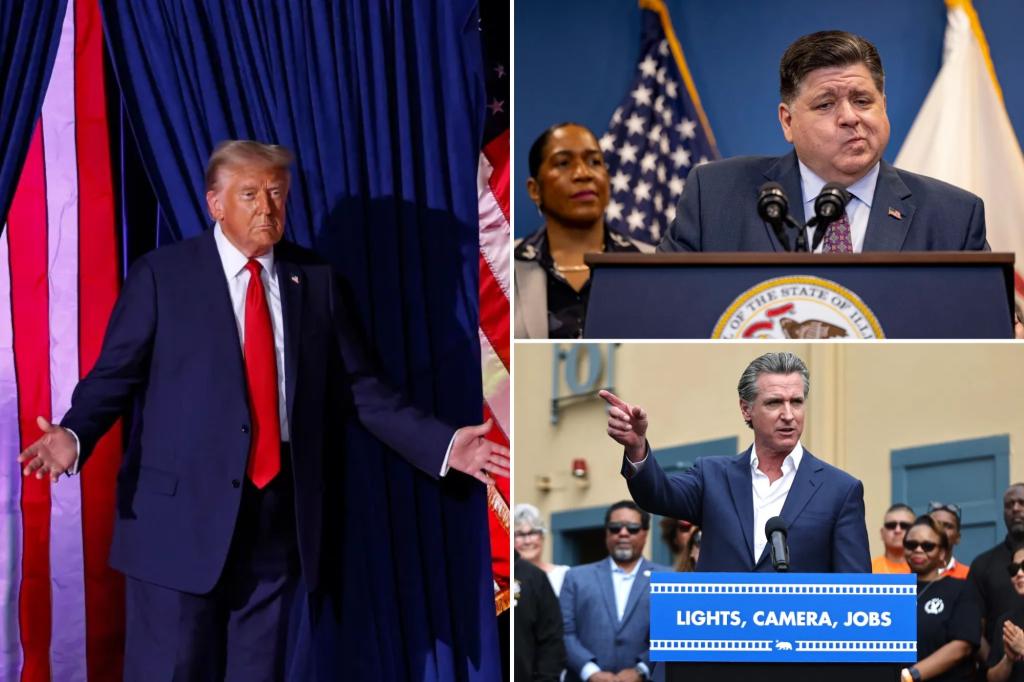Summarize this content to 2000 words in 6 paragraphs
They’ve had enough.
A movement in a myriad of rural counties across deep blue states such as Illinois and California to split off and form new states appears to be gaining some steam in the wake of the Nov. 5 election.
Conservative residents of the rural regions are taking note of their peers fleeing to lower-taxed and less-regulated red states but they are ready to stay put — pining for a divorce with the urban sectors of their state.
A group dubbed the New Illinois State has drafted a new constitution and championed plans to “Leave Illinois Without Moving.” On Election Day, seven rural counties in Illinois voted to contemplate splitting off from the state.
“There’s a lot of people in Chicago, and I think that they make a lot of decisions that affect people downstate,” Phil Gioja, from Iroquois County, told the Wall Street Journal.
“It’s just sending a message that, ‘Hey, you know, there’s people that would like to be part of the conversation, and often aren’t.’”
In Iroquois County, about 73% of voters backed the idea of banding together with other counties in Illinois, except Cook County, which encompasses Chicago and forming a new state. Chicago is home to about 40% of Illinois’ population.
While Gioja doesn’t anticipate a separation soon, some backers of a rural divorce think that an opening will come.
“We always believed that our best opportunity to negotiate our way out of Illinois was when Illinois was approaching that financial cliff — it’s been on a path toward it for years,” G.H. Merritt, who chairs New Illinois State told the outlet.
Out in California, a similar movement has taken root as well. The New California State organization hopes to splinter off the counties outside the Bay Area, Sacramento and Los Angeles.
“I’m so flipping excited,” Paul Preston, who founded New California State, told the Wall Street Journal.
Preston bashed the Golden State to the outlet as a “one-party communist state, and technically, they have seceded from the Union already.”
But his and other like-minded movements face an uphill battle. To win statehood, they would need the green light from state legislatures — difficult to lock down from the states where they’d like to splinter off.
Hawaii was the last state formally added to the US. There have been efforts by Puerto Rico and Washington DC to attain statehood, but none of them have garnered much steam.
Following the Nov. 5 election, California Gov. Gavin Newsom has visited red counties and told voters: “Message received.”
“I don’t care who you voted for. I care about Trump supporters, I care about Robert Kennedy Jr supporters, I care about Tucker Carlson supporters, I care about Charlie Kirk supporters, I care about Ben Shapiro supporters, I care about all people,” Newsom said during one of his stops.
Out in Oregon, the Greater Idaho movement is hoping to reconfigure state lines so that rural counties past the Cascade mountain range can join their conservative-run neighbor Idaho.
“The State of Oregon has said we’re not going to talk about it and are basically holding people in Eastern Oregon captive against our wishes,” Matt McCaw, executive director of Greater Idaho, told the outlet.
A similar movement had taken place in three Maryland counties — Garrett, Allegany and Washington — which asked to join West Virginia and got support from Gov. Jim Justice (R) back in 2021. None of those counties have moved over.
The urban-rural divide has long had ripple effects in domestic politics. President-elect Donald Trump enjoyed a major advantage over Vice President Kamala Harris in rural areas.
Trump, 78, also managed to chip away at the Democrats’ long-held grip on urban centers, dramatically reducing the margins in traditionally blue states relative to the 2020 election.
Throughout his campaign, the 45th and soon-to-be 47th president assailed liberal-run cities, claiming that they were overtaxed, rife with crime and falling apart.


